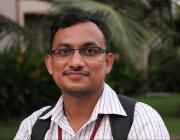Objectives
• To provide students with a sound understanding of existing electronic devices, so that their studies of electronic circuits and systems will be meaningful.
• To develop the basic tools with which students can later learn about newly developed devices and applications.
Module I (13 hours)
Bonding forces in solids – Energy Bands – Metals, semiconductors and insulators – Direct and indirect Semiconductors – Variation of Energy Bands with alloy composition – Charge carriers in semiconductors – Electrons and holes – Effective mass – Intrinsic and extrinsic materials.
Charge concentrations – Fermi level – Electrons and hole concentrations at equilibrium – Temperature dependence of carrier concentrations – Compensation and space charge neutrality.
Drift of carriers in electric and magnetic fields – Drift and resistance – Effects of temperature on doping and mobility – High-field effects – Hall effect.
Module II (13 hours)
Excess carriers in semiconductors – Carrier lifetime – Direct and indirect recombination – Steady state carrier generation – Quasi Fermi levels.
Diffusion of carriers – Diffusion process – Diffusion coefficient – Einstein relation – Continuity equation – Steady state carrier injection – Diffusion length.
P-N junctions – Equilibrium conditions – Contact potential – Equilibrium Fermi levels – Space charge at a junction – Forward and reverse biased conditions – Steady state conditions – Qualitative description of current flow at a junction – Carrier injection – Diode equation – Majority and minority currents through a p-n junction – V-I characteristics of a p-n junction diode.
Module III (12 hours)
Reverse breakdown in p-n junctions – Zener and avalanche mechanisms – Breakdown diodes.
Time variation of stored charge in p-n junctions – Reverse recovery transient – Switching diodes – Capacitance of p-n junctions – Varactor diodes.
Metal-semiconductor junctions – Schottky barriers – Rectifying and ohmic contacts.
Optoelectronic devices – Optical Absorption – Solar Cells – Photo detectors – Photoluminescence and electroluminescence – Light emitting diodes – Laser diodes.
Module IV (12 hours)
Bipolar Junction Transistor – Bipolar Transistor action – Basic principle of operation – Simplified current relations – Modes of operation – Majority and minority current components – Emitter
injection efficiency – Base transport factor – Current transfer ratio – Current amplification factor – Amplification and switching – Base width modulation – Avalanche Breakdown – Base resistance and emitter crowding Field Effect Transistor – Basic JFET operation – pinch off and saturation – Transconductance and amplification factor – V-I characteristics – Transfer characteristics
Basic principles of high frequency transistors – Schottky transistors; Phototransistors
Module V (10 hours)
Ideal MOS capacitor – Energy band structure in depletion, accumulation and inversion modes, C-V characteristics – Threshold voltage.
MOSFETs – Enhancement and depletion MOSFETs – Current-voltage relationship – Transconductance – Control of threshold voltage – Basic principles of CMOS.
Tunnel diodes – pnpn diodes – Introduction to SCR and IGBT.
Reference Books
1. B. G. Streetman, S. K. Banerjee, Solid State Electronic Devices, 6th ed., PHI Learning Pvt. Ltd., New Delhi, 2010.
2. D. A. Neamen, Semiconductor Physics and Devices, 3rd ed., Tata McGraw Hill Education Pvt. Ltd., New Delhi, 2010.
3. M. S. Tyagi, Introduction to Semiconductor Materials and Devices, Wiley India Pvt. Ltd., New Delhi, 2008.
4. J. Millman, C. C. Halkias, S. Jit, Electronic Devices and Circuits, 3rd ed., Tata McGraw Hill Education Pvt. Ltd., New Delhi, 2010.
5. M. K. Achuthan, K. N. Bhat, Fundamentals of Semiconductor Devices, Tata McGraw Hill Education Pvt. Ltd., New Delhi, 2010.
6. V. Suresh Babu, Solid State Devices and Technology, 3rd ed., Pearson Education, 2010.
2014
